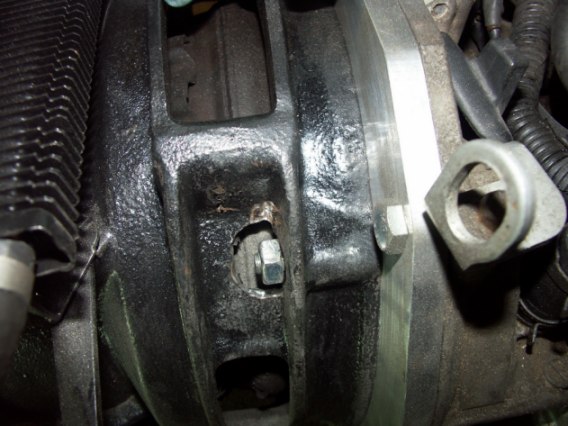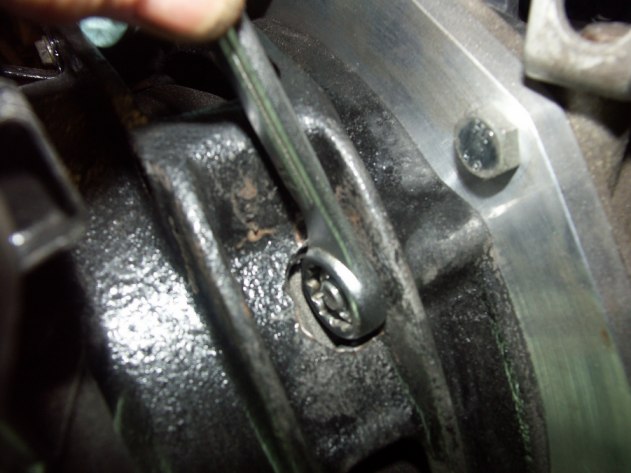Kind of dirty but this is where you start.
Carefully lift out the torque converter - being careful to NOT
remove the splined shaft that goes into the A/T to drive the
hydraulic pump. Then carefully wrap the opening and shafts so
that no dirt gets in.The next part of the game is to
achieve two things-
a) Make a hole in the bell housing casting so you can
put a nut on the KEP stud that will eventually pass through
the hole described below.
b) Drill out the existing threads and make a hole all the
way through.
In the end it should look something like this:

Making this hole requires slow patient action - my
technique is to first scribe the centre line of the eventual
stud hole on the web of the bell housing casting - then at 90
degrees to that line scribe a line about 3/8ths of an inch
from the circular ring where the nut is going to rest.
On this line centre punch two spots 5/16ths on either side of
the stud hole centre line. Then starting with a small drill
make two holes where you centre punched. Then use larger drills to
open these two holes up to 9/16ths or 5/8ths inch. This kind of
defines the outer edges of the hole and now the fun begins.
Using either a hand file or a Dremel tool cut out the web
between the holes and make the hole nice and flush with the
ring in the casting. Two things to remember:
1) Make the hole just big enough to get a ring type wrench
on the 17 mm nut.
2) keep all corners of the hole round with no sharp notches
(this helps prevent stress risers that could lead to cracking of
the bell housing)
Here is a picture of the wrench on the nut:

Once you have the hole in the casting - you can drill the
threads out and make the hole go right through the ring in the
casting. This wants to be a clearance hole the same as the
bottom two stud holes.